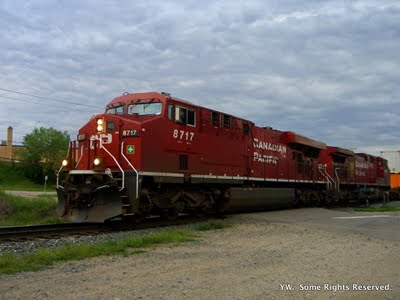The Canadian
The Canadian was officially launched as the flagship transcontinental passenger train by the Canadian Pacific Railway on 24 April 1955. It was designated as Train No. 1 (from Toronto) and 11 (from Montreal via Ottawa) going westbound to Vancouver and Train No. 2 (to Toronto), and 12 (to Montreal via Ottawa) going eastbound. The two sections join and split in Sudbury, Ontario and the train travels through Thunder Bay, Winnipeg, Regina, Calgary, and Banff. It was the first all stainless steel dome streamliner in Canada featuring stainless equipment built by the Budd Company. These stainless steel cars are still in use today on The Canadian , Via Rail Train No. 1 and 2. The Canadian -the original at Banff, AB with a leading EMD FP9 Park Series observation car at tail-end of The Canadian -the original However, with the decline in passenger ridership in the 1970s, the Canadian Pacific Railway removed itself from the passenger rail market as the Federal Govern...


